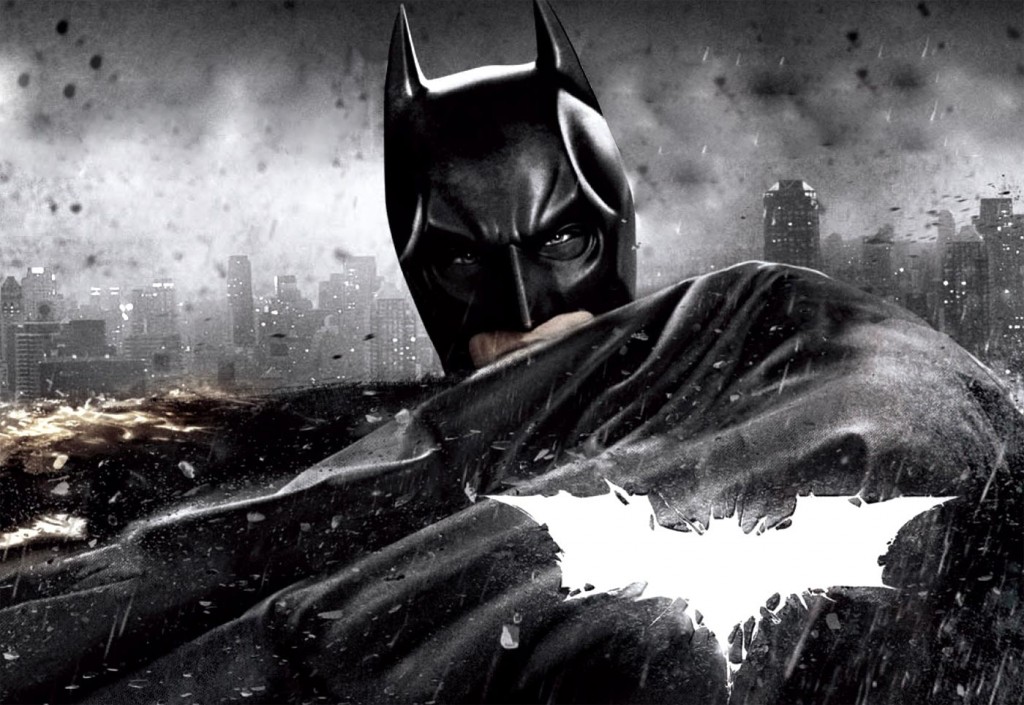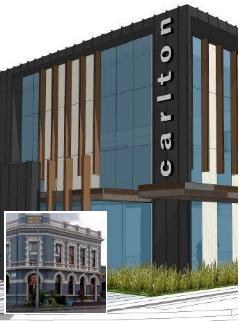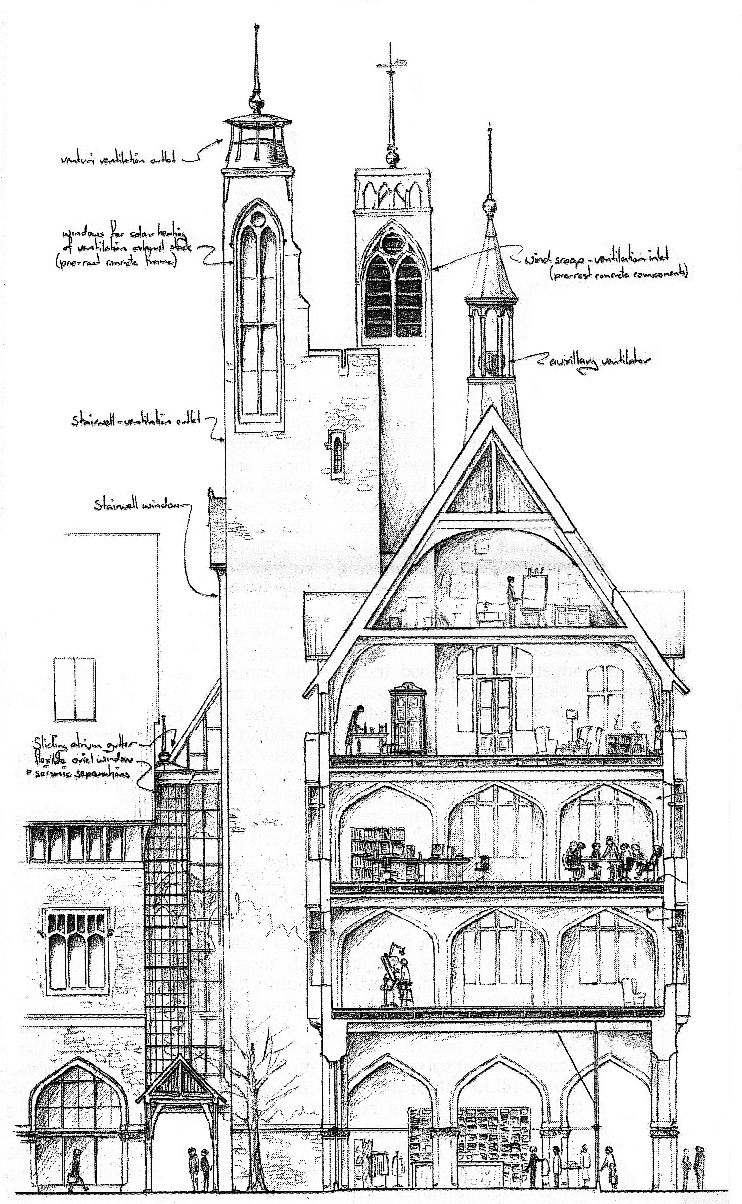A short post because I am fascinated by this proposal: the return of the neo-Gothic in Christchurch, just in time for the first showings of the latest Batman film. Is there some connection?

James Carr, a “Christchurch architectural graduate and structural engineer” has designed a stone-clad neo-Gothic building for the Triangle between Cashel, High, and Colombo St, and he describes it as “like a medieval market hall with modern technology”. Mr Carr, I take my metaphorical medieval hat off to you, and salute your efforts. More from me soon, no doubt, but in the mean time, fish-feeders, your comments please?

Post-script:
There is indeed a battle raging on the streets of Arkham, as we may want to call ChCh (I don’t think we should call Christchurch by that name any more, as there is no longer any sign of Christ, or a Church. The Dark Knight’s city had a lunatic asylum on the outskirts – called Arkham. Seems quite appropriate to me. I wonder if we can make it stick?). The battle is one returned after a century or more absence: the battle of the Styles.

On the one hand we have the neo-gothic, as evidenced by Mr Carr and Mr Beaven (one a little more experienced than the other, but both quite energetic).

And on the other hand, we have neo-blandini, as evidenced by the design for the Carlton. The letters page to the Press will no doubt be running red-hot down there this weekend.





I admire the work he’s done, but.. the building looks too similiar to the old gothic buildings already there. It might cheapen them somewhat. Also how many cantabrians are going to feel safe about going into a multi-storey stone building post 2011! No matter how safe they say it is.
And here I am doing a work tearing the faux gothic decor out of a place. Why? Because the client says it’s dated and looks tacky. ahhh…
As long as you’re not tearing the heart out of Peter Beaven’s faux gothic Chateau in the Park… The poor man, lord rest his soul, has suffered enough destruction.
I’m intrigued to find out more about Mr Carr though. He’s both an engineer AND an architectural grad? I don’t think I know anyone in Nz that has crossed over to the dark side, or vice versa. He’s certainly not drawing like an engineer – he’s even drawn himself in a little cameo on the First floor, standing at the drawing board. There’s a starving artist in the Garret in the roof. I’m sure there’s some well engineered structure behind those stone veneered walls. Christchurch needs a hero to rise up. Much the same as Gotham city.
And right now, I’m off to a midnight screening of the Dark Knight Rises.
well, in light of your comments of his artistry, I think I would prefer he pursue his architectural endeavours at weta.
Well, movie done and dusted. I caught the double bill at the Embassy – not the first film, but the second (the best) and this latest feature. It is years since I have seen the first two films – of this current Chris Nolan tradition – and I had forgotten how good the Joker was, as played by Heath Ledger. I know everybody raved about him at the time, but I put that down to just nostalgic over-reaction to his recent death – but he was good – very good – definitely the best performance of his career. Soooo much better than Jack Nicholson…
Anyway: the new film, Dark Knight Rises, really doesn’t have a baddy as good as the joker. He’s a villain called Bain (no, not David), and is a pretty big hefty chump with an unexplained vaguely Hannibal Lecteresque metal masky thing over his face, which for me, just had the effect of muffling his speech. How often do we have a main character in a speaking role and we never see their lips move? Couldn’t understand half of what he was saying, despite the volume just about blowing the ears of my head.
What is more interesting for me, however, is that all the baddies are British – Bain, or Bane, has a lovely slightly plummy British brogue – which, given that he is alleged to have grown up in a communal cesspit/dungeon outside Jodphur in India, seems more than just a trifle unlikely. And another character, a female, also has a british accent, in spite of growing up in similar unenlightened circumstances. Somethign rather fishy there.
But my real rant, if there be any reason for one, is that Gotham was quite clearly identified as New York in this film, and for me, that’s just wrong. We all know that Superman lives in Metropolis, and that is really just a frontage for New York. His fellow crime-fighting buddy, Batman, obviously lives in a separate city, Gotham, and there has always been elements of the seedy steelyard settings of Philadelphia, Pittsburg, and especially Chicago. Gotham, and the whole Bat franchise, has a wonderful seedy, dark, blue-black filmic quality, that works better for me with Chicago than for New York, although Frank Miller, writer of the Dark Knight graphic novels, has apparently said that to him, “Metropolis is New York in the daytime; Gotham City is New York at night.”
This piece from today’s Press seems to indicate that Carr’s proposal is an exception rather than the rule.
http://www.stuff.co.nz/the-press/opinion/perspective/7307554/Hideous-design-a-byproduct-of-haste
Indeed – and a wonderfully inventive exception it is, too. That picture of the Carlton Hotel does look as bland as fuck really, doesn’t it?
>How often do we have a main character in a speaking role and we never see their lips move?
Darth Vader? Think of his “I am your father” scenes where he spends a lot of time standing with his arm outstreched doing a whole lot of nothing which JEJ does the dialog. It’s unanimated and dull and I think he’d be much better if we could see a bit of evil in his expression.
I’m interested in what people here think in general about mimicry of old styles in new architecture. It all seems a bit Prince Charles to me.
Re: mimicry of old styles in new architecture. If you want to take it to the extreme, then Quinlan Terry is your man (Prince Charles loves his stuff). The work of his I’m most familiar with is Riverside in Richmond (West London) mainly because I was living just up-river from it when it was being built.
http://www.qftarchitects.com/projects/pages/commercial/richmondriverside.php#
I was very critical of it when it was being constructed (what’s the point etc etc..) but had to admit that its fake Georgian fitted in really well with all the real Georgian…and when it opened it actually had lots of public space…and a couple of great pubs…and the scale was really good…and the different buildings worked well together…and kids and families liked hanging out there…and having a beer out the front on a summer’s day while the sun set and everything turned orange was bloody amazing… and I gradually began to realise that Charlie had a point. Most visitors to the area would never suspect that this is a 25 year-old development surrounded by 150 – 200 year-old buildings. Whether Christchurch goes down this path I don’t know but the chap who commented on the Stuff article has a point when he said “They’ve chucked out hundreds of years of collected architectural widom about harmony, scale, context, elegance and human souls and instead embraced a computer-generated crunch-the-numbers methodology resulting in lowest-common-denominator rubbish such as the proposed Carlton”.
Yes, I too was captivated by that phrase from the comments list.
“They’ve chucked out hundreds of years of collected architectural widom about harmony, scale, context, elegance and human souls and instead embraced a computer-generated crunch-the-numbers methodology resulting in lowest-common-denominator rubbish such as the proposed Carltonâ€.
I like that the public are questioning the ruling orthodoxy.
Question – not being an architect !
What is the problem with mimicry, or perhaps just taking inspiration from something – providing it is done well. Seems to me that there’s always a lot of mimicry/inspiration going on – or variations on a theme. The question is whether new buildings mimic or are inspired by other new buildings, or something older.
Isn’t the important thing that the buildings themselves are attractive and worth looking at ? Context and location are obviously important. Surely for the sake of this conversation whatever the styles of buildings chosen in Christchurch isn’t the test that people like looking at them, are even drawn to visit them. The fear I have is that too many buildings will be that lowest common denominator cheap and uninspiring box. That will not make for an attractive city, so I hope that all the public and private decision makers can deliver something really worthwhile.
I too attended the first night / midnight screening of the Batman film, and am appalled at the mass slaying in America at their midnight session in Denver. It is odd though – we had a lot of Batfans at the Embassy, and most were dressed in black – some in themed costume – one bloke came dressed in a face mask like Bane – he got cheers and a big round of applause. Appeared to watch the whole film with his very authentic looking mask on.
Sad then that the viewers in Denver probably just thought they had another wild fan, when their killer came in with dyed hair and costume. Thank God that our fans know the difference between fantasy and reality. The film is very violent, and the “baddies” as you call them, are essentially anti-authoritarian. I felt, when watching the mayhem and thuggery on screen, that the line between film fantasy and encouraging political anarchy was being stretched very thin there. It has snapped in America.
In light of mimimus’s comment last week about Weta, I came to the conclusion not so long ago (following a conversation with Ian Lochead of the UC Art History department) that for most of the last seventy or so years too many of our most creative designers of architectural space have been banished to film and television, blunting their talents on polystyrene, plaster of paris and detail scaled for cameras and background, unable to get their teeth into real timber, brass and and stone. Like them or not, the sets in Alien, Stargate Atlantis, City of Lost Children, LOTR, and any other big-budget fantasy or sci-fi you care to think of are genuine architectural expressions of the late 20th and early 21st centuries, and they do say something to us and of us. We need to start building to reflect the full diversity of our society.
Anyway, if any of you are interested there’s some more background to my Triangle Centre proposal on my website under ‘Projects’ at http://www.whimbrel.co.nz (alas it won’t work in IE8 or older).
The genesis of the scheme pre-dates at least the last three Batman films, but you could argue that it would be hard for anyone creative to grow up in our society without at least being AWARE of Gotham.
Andy – the problems with mimicry are largely cultural, insofar as ‘architectural culture’ concerned. Architects are chiefly Romantic in outlook, still believing in the artistic genius of ‘creativity’.
Of course, architects do copy other architects work, but usually in an unacknowledged and/or denied manner (although this does seem to be changing). ‘Inspiration’ is ‘allowed’, but the inspiration has to be sufficiently removed so as to claim ‘creative’ ownership over the final design. Originality remains the goal. This is all largely confirmed in the language of architectural-speak (just read any architectural jury citation).
The misalignment between public tastes and architectural values is thus a product of the diverging prioritisation of quality versus creativity. That the public also value familiarity and order in the built environment, further puts their desires at odds with architectural culture. Plenty of studies have been conducted which confirm this. This ‘talking past each other’ is one of the reasons for the perception that the architectural community is ‘aloof’, and why they value so much the chance to work with the rare and legendary ‘enlightened client’.
Of course, these are just generalisations: obviously our best architects will deliver both, and the worst (e.g. the Carlton), neither. However, it takes a brave architect to follow the dictum: “It is better to be good than to be original.”…
James Carr, welcome along to the discussion – thank you for finding us and joining in. I will go and check out your whimbrel website – and I want to know more about you. Despite minimus’s misgivings, I’m quite impressed by the out-coming by-products of Weta, and indeed, like many architects in town, am quite jealous of them. In many ways they have it better than us: they have a very free hand in their imagination; it gets built overnight, literally; they get photographed and hence last forever, even if it is for only a fleeting moment on screen; there is no come-back in case of leaking, and hence no bloody lawsuits.
m-d : great comments, thanks!
Regarding the whole Gotham/New York thing, it was integral to the rather clumsy subtexted critique of the role that financiers have played in the ‘Global Financial Crisis’. It wasn’t just the oh-so intellectual repartee between Catwoman and Batman, but the possibility of a popular uprising against the powers that be taking hold in the streets – which Nolan was ‘exploring’ here.
Of course, the establishment wins out in the end, and things return to normal, the 99% go back to their jobs (or benefit queues).
Note that Wayne Enterprises is no more by the end of the movie, so Batman becomes, for the audience at least, a commoner like the rest of us – and far more palatable as a superhero for the next instalment “Batman: When the Red, Red Robin Comes Bob, Bob, Bobbin’ Along”…
…and on mimicry: http://www.nytimes.com/2012/07/26/world/europe/26iht-letter26.html?partner=rssnyt&emc=rss
Not that I’m advocating for that in Chch, but it is within the realms of possibility…
Just to say thanks m-d for the interesting insight into architectural thinking. Very much appreciated. I did wonder if anyone would say it isn’t so but it seems not !
Warmest regards
Andy
I wondered too, it was meant to be a little provocative, but apparently not!
Some interesting, related commentary from the Architectural Record’s website:
Commentary: Batman’s Paranoid City
With his latest Dark Knight film, Christopher Nolan gives us a Gotham for our times. By Dante A. Ciampaglia. July 30, 2012
http://archrecord.construction.com/news/2012/07/120730-Batman8217s-Paranoid-City.asp
“For nearly 75 years, Batman and Gotham City have been symbiotically connected, one essential to the formation of the other. And each new iteration of the character has brought with it a new city. Gotham began life as an exaggerated New York, but since the 1980s, Batman has become darker and more psychological, and with him, the city has become more conceptual and nightmarish. Director Christopher Nolan’s Dark Knight Trilogy, which concludes with The Dark Knight Rises, rescues Gotham from the couch by presenting it, instead, as a real city with real horrors. In Nolan’s films, Gotham City represents America in the age of terrorism.
Previous Batman movies conceived Gotham as a world outside time and reality. The city in Tim Burton’s Batman (1989) and Batman Returns (1992), for example, was created on soundstages and backlots and seems to have sprung out of the subconscious, with Art Deco and Expressionist accents grafted onto a noir cityscape. It’s visually exciting, for sure, but more dreamlike than urban reality.
Nolan’s films go in the opposite direction. His Gotham City is tangible, based in existing physical spaces, yet anonymous enough to be anywhere. This reflects his desire, articulated in the book The Art and Making of The Dark Knight Rises (2012), to make an action/adventure film rooted in verisimilitude rather than a fantastical comic book movie. But it’s also a result of an urban hodgepodge created by three different reality-based interpretations of Gotham over the course of the trilogy.”